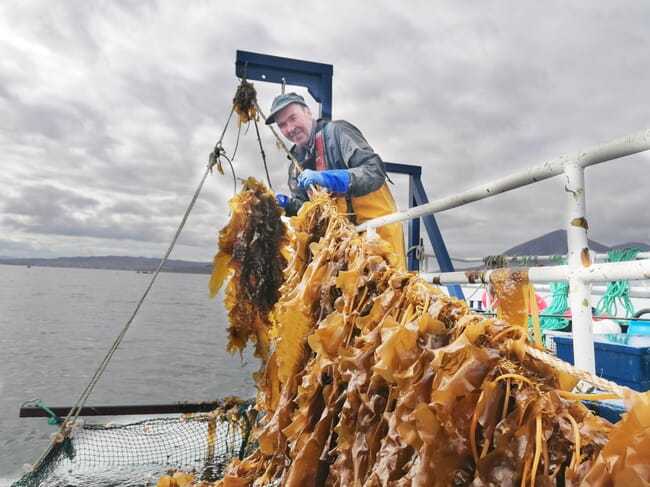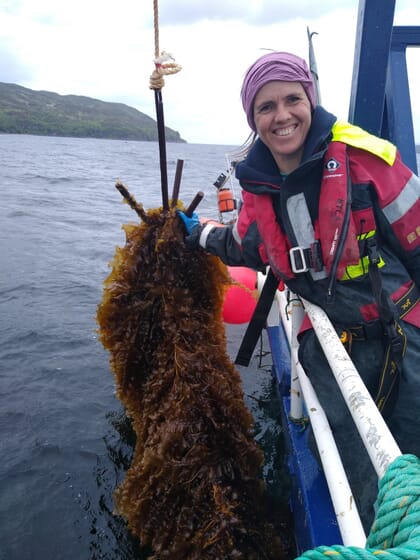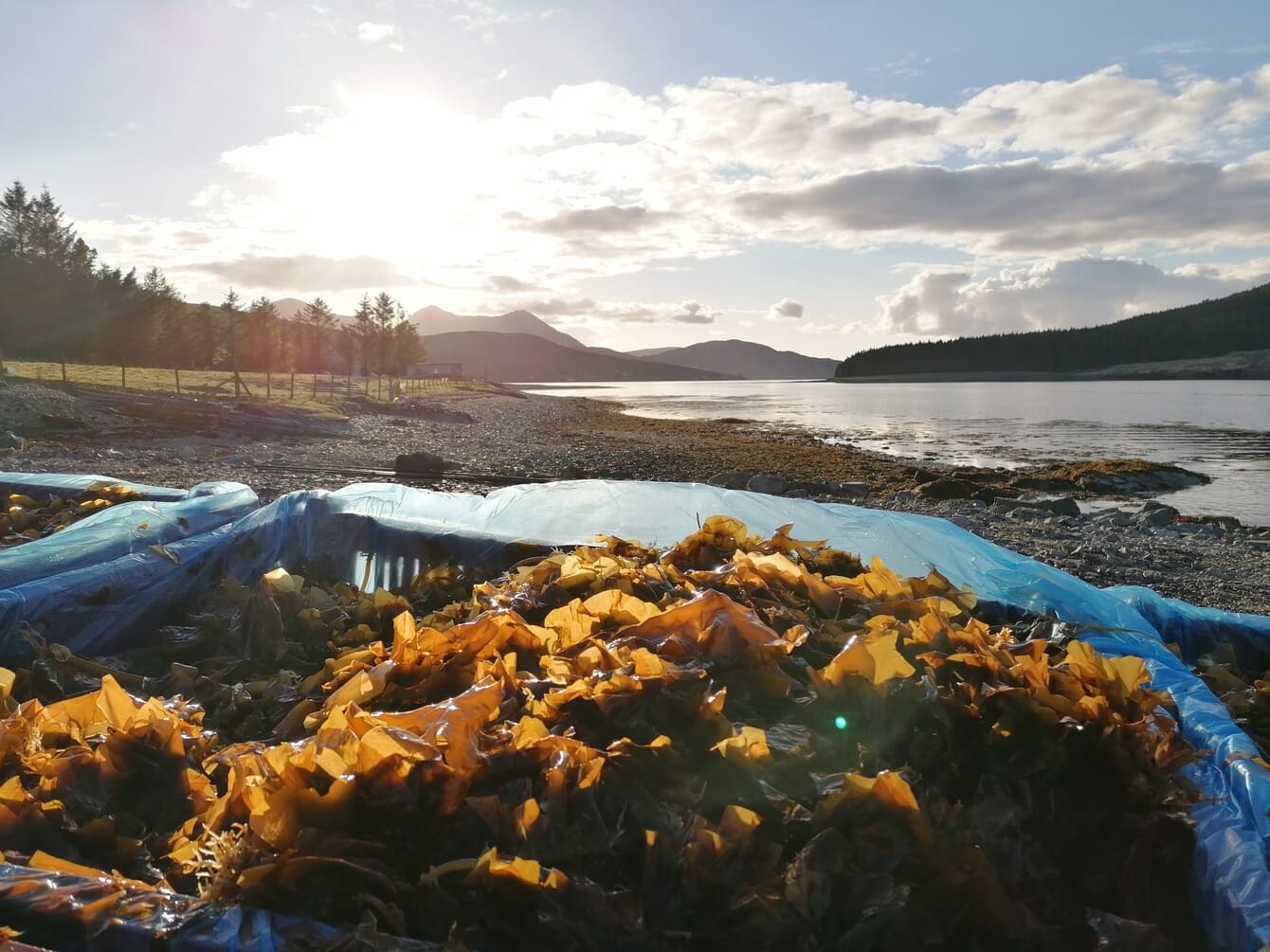
The flow of nutrients through the food chain is a critical part of ecosystem health. Organisms at different trophic levels create, alter and extract what they need from various compounds through biological processes that link them all together. Humans have understood this throughout history by growing species not as a monoculture, but rather as part of a system where waste from one organism can be a benefit to another.
This concept is well understood in the world of aquaponics, where – for example – the nutrients in the waste from a finfish species can be used to enrich water where plants are being grown. The plants, in turn, remove dissolved compounds, helping to keep the water clean and reusable. The circularity of growing both together, and considering nutrients no longer as wastes but as co-products, increases efficiency by producing more total food per unit of input, and allows each to provide services to one another.
While aquaponics is gaining ground here in North America – as illustrated by the recent expansions of Springworks Farms and Upward Farms – its application in more open aquatic systems, where it is known as IMTA, is only slowly starting to gain a foothold in the West.
What is IMTA?
Dr Thierry Chopin, who works in Canada with Chopin Coastal Health Solutions & Magellan Aqua Farms, coined the term IMTA in 2003-2004, although his research into the subject dates back to 1995.
According to his definition, IMTA combines - in the appropriate proportions and scales of management areas - the cultivation of species at two or more trophic levels, based on their complementary ecosystem functions, such as fed species (eg finfish), particulate organic nutrient extractive species (eg shellfish and other invertebrates, herbivorous fish) and dissolved inorganic nutrient extractive species (eg macro- and micro-algae and plants).
Dr Chopin believes that this can hold great benefits for both the environment and the farmers. The different components of an IMTA system do not have to be right in the same site, but entire bays/coastal areas/regions could be the unit of IMTA management within an integrated coastal area management (ICAM) strategy. The placement of the different components of an IMTA system, and the scale at which it will be managed, will certainly trigger changes to regulations as they are designed without IMTA in mind in most countries.
Seaweeds of different genera can be useful in providing oxygen and absorbing nutrients, especially dissolved nitrogen, phosphorus and carbon. Also absorbing carbon dioxide, seaweeds can be an especially attractive proposition for areas looking to combat effects of coastal acidification. While providing livelihoods for people along the coast, farming seaweeds can actually provide ecological and water quality services in the area in which they are grown. Shellfish, as filter feeders, can also improve water clarity by filtering out particulates and plankton. Farming these species even provides areas of refuge for other inhabitants in the ocean.
IMTA, by participating in the much-needed decarbonisation of this world and the dietary shift towards the consumption of sustainable low-carbon aquatic-based sources of food, could improve food insecurity, while reducing greenhouse gas emissions and carbon footprints from terrestrial livestock production systems. This would in turn contribute significantly to climate change mitigation.
The need to change regulations
As wonderful as it seems, Dr Chopin explains that “in Canada, there was an old regulation that requires the farming of one species to be at least 125 m away from other species. In places like Norway, this regulation can be 1 km, or even up to 5 km, depending on the region.”
Dr Chopin worked with the Canadian government for nearly a decade to have that regulation changed.
“For eight years, the Canadian Food Inspection Agency (CFIA) tested our IMTA kelps and mussels for therapeutants, heavy metals (including mercury), arsenic, pesticides, PCBs and bacteria. All of these parameters came back below the CFIA, US FDA and European Directives for food regulations. For bacteria, there were no alarming values around the numbers or the species. We did not observe E. coli on our samples or pathogens that typically cause issues with humans,” he explains.
The results meant that the regulation was finally changed to allow IMTA in Canadian waters.
“Seaweeds need inputs. They need nutrients in the water column. If you are culturing salmon, for instance, in a bay then that can be a source of nutrients for seaweeds. Regulators should look beyond managing one species at a time and understand all the types of interactions between species and which aquaculture techniques can be combined in a body of water with an ecosystem-based management approach.”

Putting IMTA to the test in Europe and the US
Dr Kyla Orr is putting IMTA to work near a commercial salmon farm off the west coast of Scotland, where she is working near a traditional open net pen, in a nutrient-rich environment, to grow seaweeds for KelpCrofting LLC. She has also partnered with a PhD project at the University of Stirling, which is conducting water quality, sediment and biological testing at the site to better understand these localised effects and help to quantify the amount of nutrient uptake and remediation that is taking place.
The collaborative research project should help regulators in the region understand both the benefits and accept the safety of IMTA in the same way we have come to accept aquaponics. Seaweeds harvested from the IMTA site is being tested for pathogenic bacteria at landing, before and after processing, and prior to shipping. But her biggest obstacle might be the market.
“Salmon farms have received bad press in the past and some people will associate this work with that bad press and have a negative outlook” she explains to me. “All that we can do is be thorough and transparent with our testing, and let people make their own decisions. We are on a learning curve with public perception.” All testing so far has revealed that there are no food-safety risks associated with the kelps grown near the salmon farm.
Dr Michael Chambers at the University of New Hampshire Coastal Laboratory also works with ITMA. He and his team combine multiple species in his Aquafort concept, off the coast of Portsmouth, New Hampshire. Here, steelhead trout are grown on a structure alongside mussels and seaweeds. The fish are grown to about 2 kilograms in the fast moving waters at the mouth of the Piscataqua River, from October until about June or July. This is similar to the growing schedule of the seaweeds. The mussel and seaweed lines are spaced out around the pens.

© KelpCrofting
Dr Chambers is creating a model for future ocean farmers that is more robust in the market.
“By culturing multiple species together, a farmer can capture a share of multiple markets with different harvesting schedules and create a more resilient business,” he notes.
“The Aquafort seems to act as a magnet for other species of animals and macroalgae,” Dr Chambers adds.
Interestingly enough, in New Hampshire state waters the inclusion of multiple species and trophic levels made the permitting process for his research operation easier.
“When we initially applied for the permit to grow trout here, it was not going to be approved due to the concern over nutrient additions in the bay from the animals and their feed. It was only after we added the seaweeds and the mussels, and highlighted the nutrient extraction capabilities, that we were able to get the required permit,” he explains.
Finding a balance
As with almost anything, a balance is required. Although seaweeds have a reputation for “zero input” and providing only beneficial ecosystem services, we know this is only part of the story. High intensity seaweed farming in other parts of the world (99.5 % of seaweed aquaculture is taking place in only 9 Asian countries and territories) has occasionally led to the need to fertilise water bodies, and some have suggested the implementation of fallow periods to let the bays be replenished with nutrients. Extracting too much of the nutrients from a body of water can limit the productivity of the overall ecosystem. Going from one extreme to the other is not the solution.
“There is a point when too much of a good thing (yes, including seaweeds and invertebrates) can be harmful,” comments Dr Chopin. “All organisms feed on something and excrete something; there is no ‘zero input’ food – there is no free lunch!”




